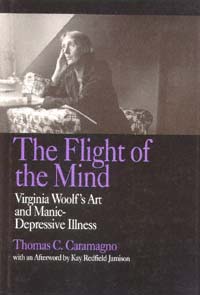
What Is Death? Contemplations Beyond the Medical Perspective
Death is an inevitable element of the human experience—ubiquitous, unavoidable, and yet profoundly misinterpreted. In the medical field, we learn to identify death in clinical and legal terms: a heart that has ceased to beat, a brain that no longer functions, a flat line on the monitor. However, underlying these vital indicators lies a question frequently overlooked in our hospitals, homes, and introspective moments: what does it genuinely mean to die?
For medical professionals, death is frequently approached in a systematic manner. It is signified by emergency codes, the use of defibrillators, notifying family members, and the completion of final paperwork. There exists a protocol, exactness, and often stress. But for Patrick Hudson—a former surgeon who became a psychotherapist—the significance of death only began to clarify when he faced his own mortality due to a serious heart attack. It transformed from a medical issue to someone else’s crisis to something deeply personal.
The Dimensions of Dying
Biologically, death seems straightforward: organs cease to operate, and life ends. Yet existentially, emotionally, and spiritually, dying is not a singular, clear-cut event—it is a nuanced, layered disintegration of the self.
Hudson observes that aspects of us begin to die long before our physical bodies do. The sense of purpose lost after retirement. The diminishing recognition in a partner’s gaze. The abrupt silence when no one seeks your opinions anymore. These are not medical deaths, but rather emotional losses—diminishments of significance, connection, independence, and identity. Our fear of death arises not only because it terminates life, but because it can initiate gradually and quietly, long before life officially concludes.
The Psychological Decline
To die, Hudson argues, is to fade away from the narrative. This may be the true source of our fear: the anxiety of being forgotten, of transforming into a past element in someone else’s story. This underlines the silent sorrow experienced by many—not solely awaiting physical death, but also the slow withdrawal from significance and acknowledgment.
This psychological aspect of dying is seldom addressed in contemporary society. We celebrate youth, productivity, and innovation while relegating aging and death to the distant, sterile environments of hospitals and care homes. As individuals become less visible in the community—due to illness, aging, or retirement—the deeper diminishment begins.
The Quest for Immortality
There’s a rationale behind why individuals endeavor to leave a legacy—why doctors continue teaching, writers keep publishing, and various professionals record their achievements. These actions are not merely driven by ambition; they serve as remedies for obscurity. We seek to be remembered, comprehended, and acknowledged after our departure—to influence the narrative even when our physical presence has faded.
However, as Hudson points out, this pursuit can only take us so far. For ultimately, to die is to become unknowable. Regardless of how well our loved ones perceive they knew us, death obscures. It separates us. The unexpressed thoughts, the unshared emotional layers—these aspects vanish with us, leaving only interpretations; what endures is memory.
The Disconcerting Unknown
One more unsettling reality is that we relinquish control. Even amidst end-of-life planning, the manner in which we are remembered—correctly or not—is beyond our control. We might be misquoted, misjudged, or miscomprehended.
This reality is compounded by what troubles the living: uncertainties like “Did they depart peacefully?” “Were they aware of how deeply I cared?” We also worry for ourselves—about whether those we leave behind will misinterpret our stories.
Yet, as disconcerting as this may be, there might be a hidden opportunity within this realization.
The Clarity Moment
Rather than attempting to conquer death, Hudson encourages us to embrace more clarity in the present. To love openly, express our truths, and forgive those who have wronged us or whom we have wronged. He proposes that the solution to death anxiety may not lie in leaving a legacy but in being present.
By engaging fully in our lives—the joy, the sorrow, the ordinary and the extraordinary—we lessen the fear of disappearing. Death may strip away our titles, successes, and accolades, but it cannot erase a life thoroughly experienced.
A Final Reflection
While death may remain a mystery, the life we lead until that moment is not. What if dying is akin to a closing aperture—a passage through which clarity briefly shines? What if the last breath signifies not merely the end of the body, but a recognition of what it meant to truly live?
Death instructs us in a gentle language: don’t postpone. Communicate what’s significant. Release what’s unimportant. Be unambiguous in your love. Be compassionate with your regrets. Most importantly, live—truly live—so that when the unknown approaches, you welcome it not with dread, but with a serene sense of fulfillment.
Patrick Hudson’s insights remind us of what it means to be fully human in the face of mortality: not merely to extend our years,